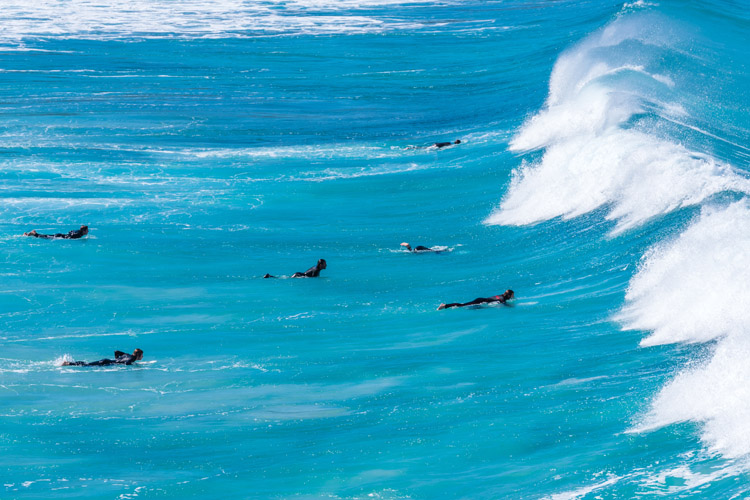An oncoming giant wall of whitewater is entirely different from a little inside wave. Learn how to get past the breaking waves more easily and without getting pounded or losing your board.
The turtle roll, also known as the Eskimo roll, is a surfing technique that allows you to get past the breaking waves without having to discard your surfboard or duck diving in challenging conditions, especially when it's closing out and the waves hit the overhead mark.
Originally, the turtle roll was a longboarding skill. Why? Because longboards are extremely buoyant, and hard to duck dive under the soup.
That is why flipping surfboards is better than trying to punch through the whitewater.
But the turtle roll skill is also useful to advanced riders on high-volume funboards or beginners with large foam surfboards.
It should be the second lesson learned by first-timers.
Because they can't time the sets very well, newbies tend to paddle toward the lineup until they run out of breath.
They believe it's a matter of fighting the whitewater. But it is not.
Turtle Roll 101
The secret is stopping paddling, saving energy, and activating the turtle roll mode. It's simple and quite effective. Let's see:
- Get your board perpendicular to the oncoming whitewash;
- Stop paddling when you see a huge set;
- Grab the rails of the surfboard, bend your elbows, and push the nose of the board slightly down;
- Push your body up with one knee;
- As the wave approaches, take a deep breath;
- Flip the board underwater and hold on tight;
- Wait for the wave to pass over the board;
- Flip the board over, climb back upon it, and resume paddling;
A common mistake is paddling out with the board sideways. When this happens, the turbulence will hit the rails and easily pull the board out of your arms.
Finally, don't try to wrap your legs around the board. Use your arms only. And make sure you enter turtle roll mode, in position underneath the water, well before the wave gets to you.
Start practicing your turtle roll when the surf is small before trying it in a more powerful swell, or even if you think someone is about to hit you as you paddle over a wave.
A turtle roll may protect you from unwanted yet dangerous crashes.
